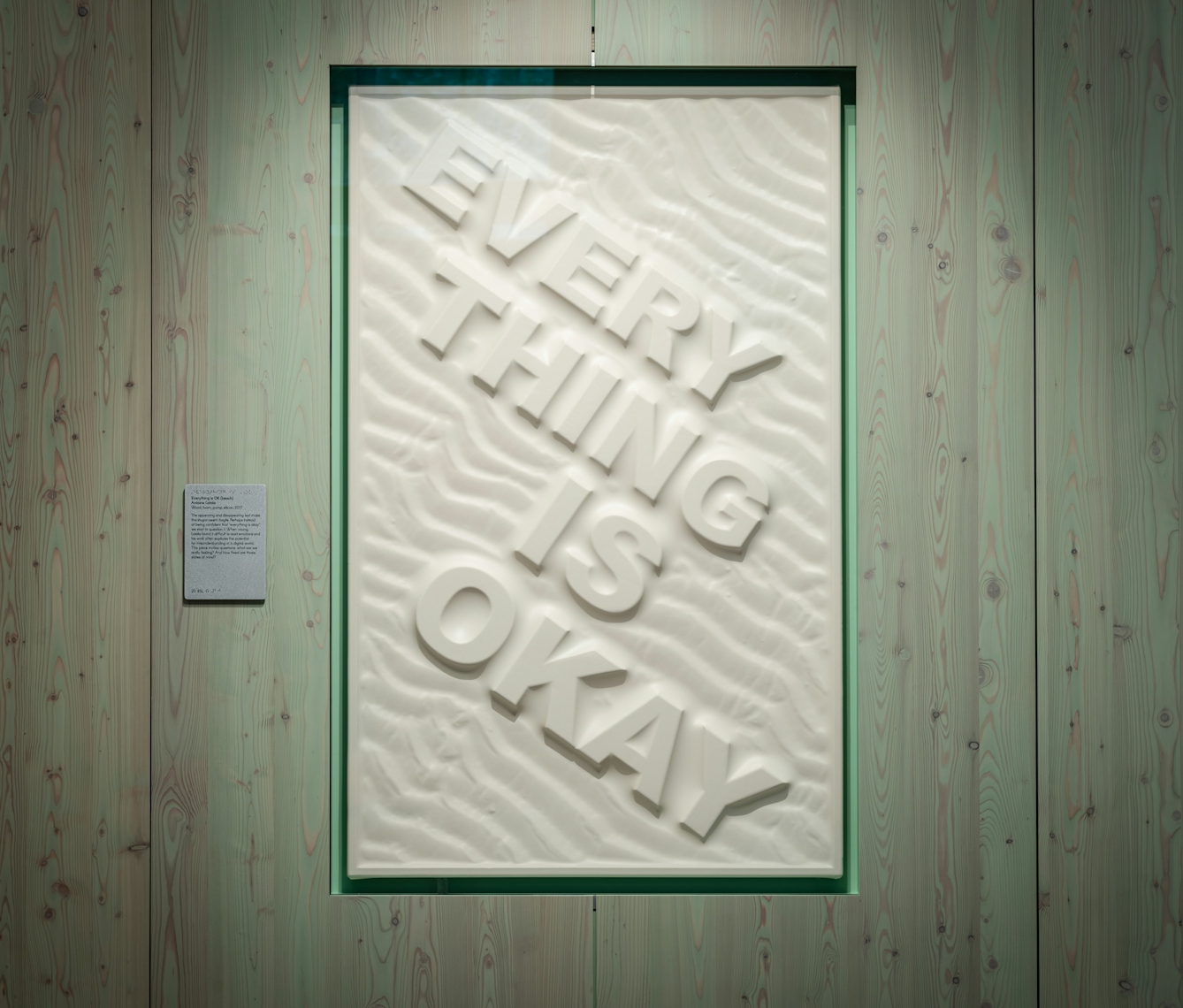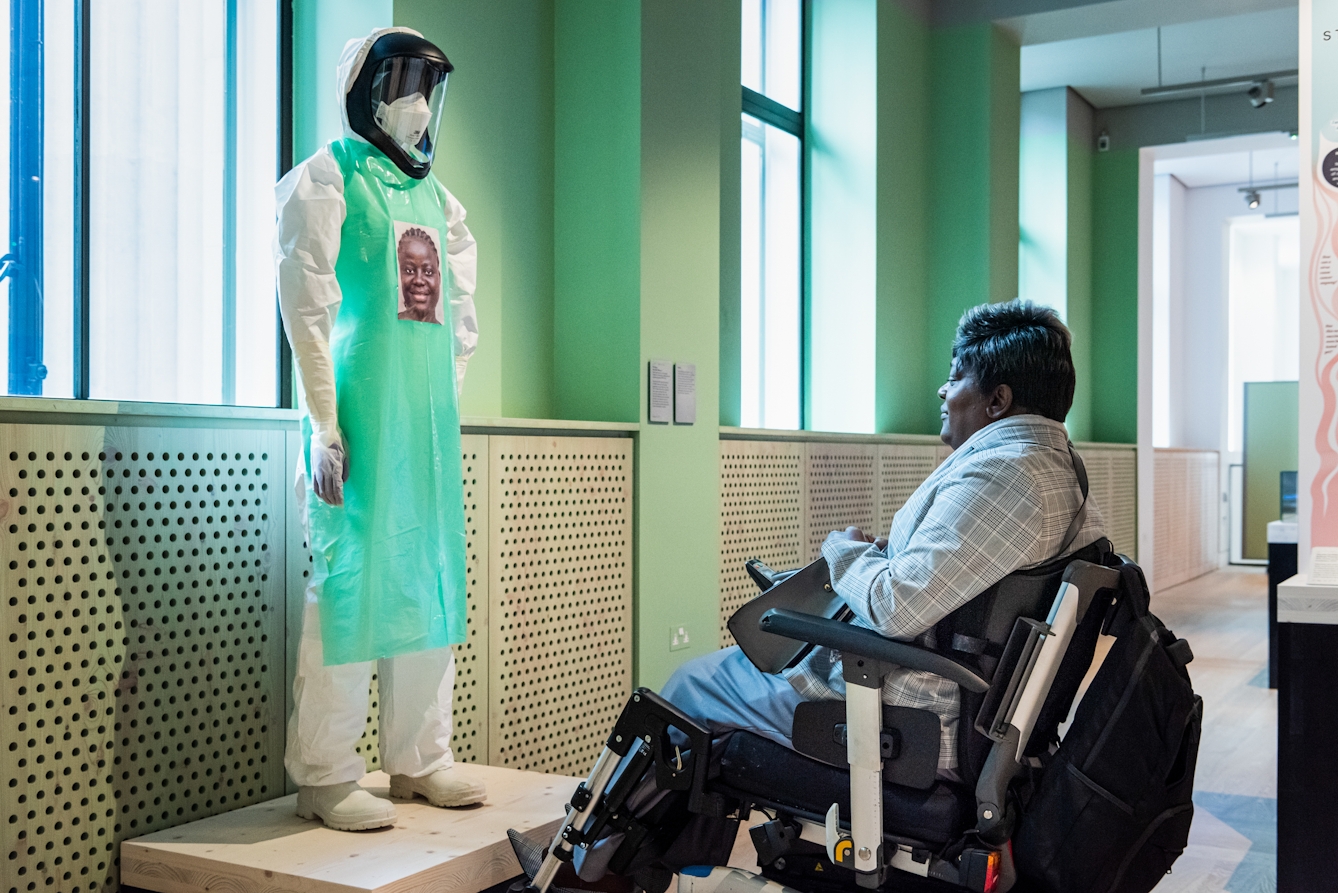Visual story
When Wellcome Collection reopened to the public after lockdown, we made some changes to make everyone’s visit as safe and enjoyable as possible. You can read more about how we are keeping you safe here.
If you have a temperature or any other Covid-19 symptoms, please stay at home. Unless you’re exempt, we’d appreciate it if you can keep your nose and mouth covered, to help keep everyone safe.
To listen to the audio content in our exhibitions you will need a pair of headphones. You can either bring your own or borrow a pair from us.
Getting here/Arriving
Wellcome Collection is on the Euston Road in central London, close to Euston station. You can get here by train to Euston, or by Tube to Euston, Euston Square or King’s Cross station. You can also get here by bus. Find out more about transport on our Getting here page.
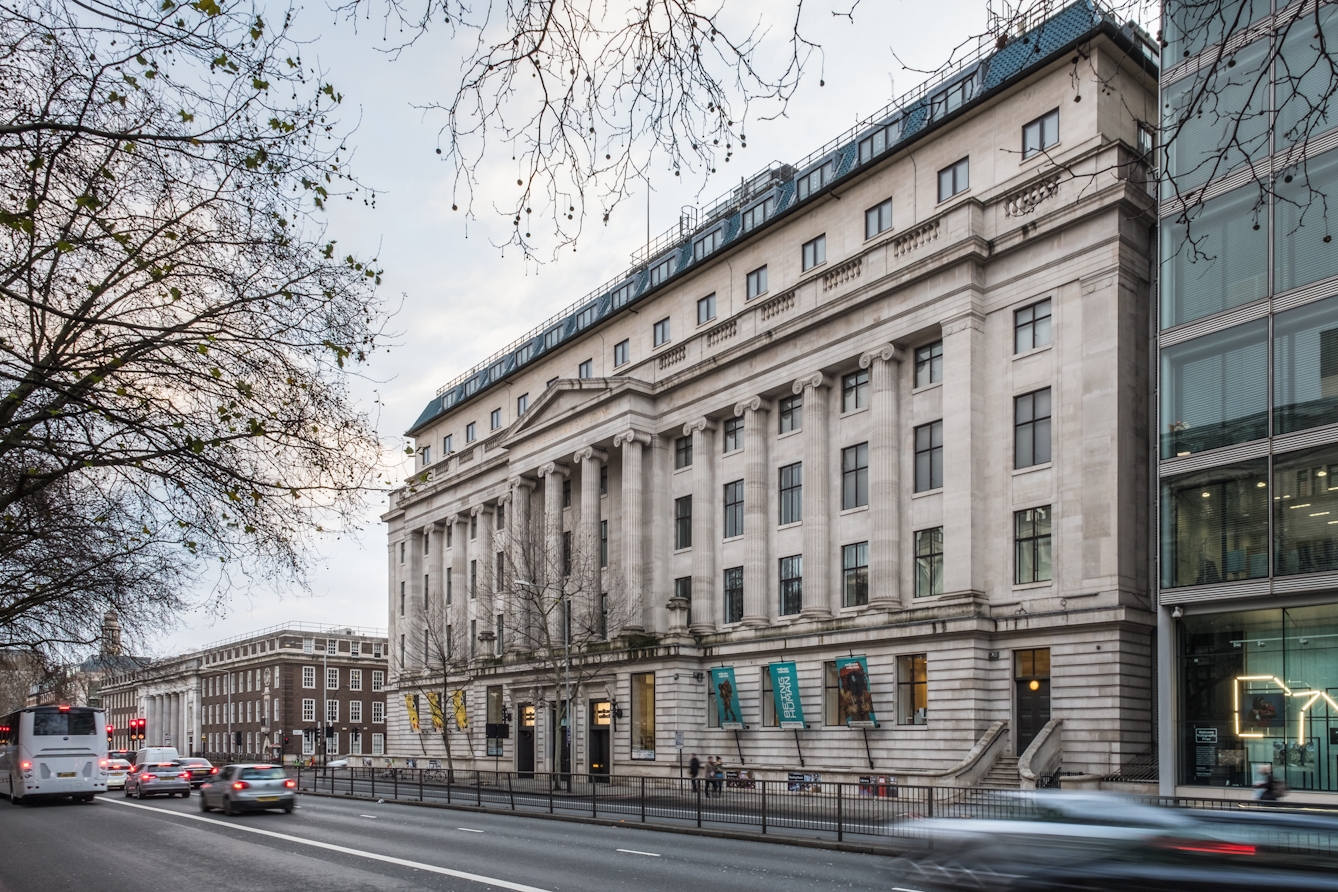
A taxi will be able to drop you off outside our main entrance. If you have a Blue Badge you can park your vehicle in our basement car park, accessible from Gower Place. If you need assistance, a member of our staff may be able to collect you from Euston Square Tube station (pictured below) and accompany you to our building.
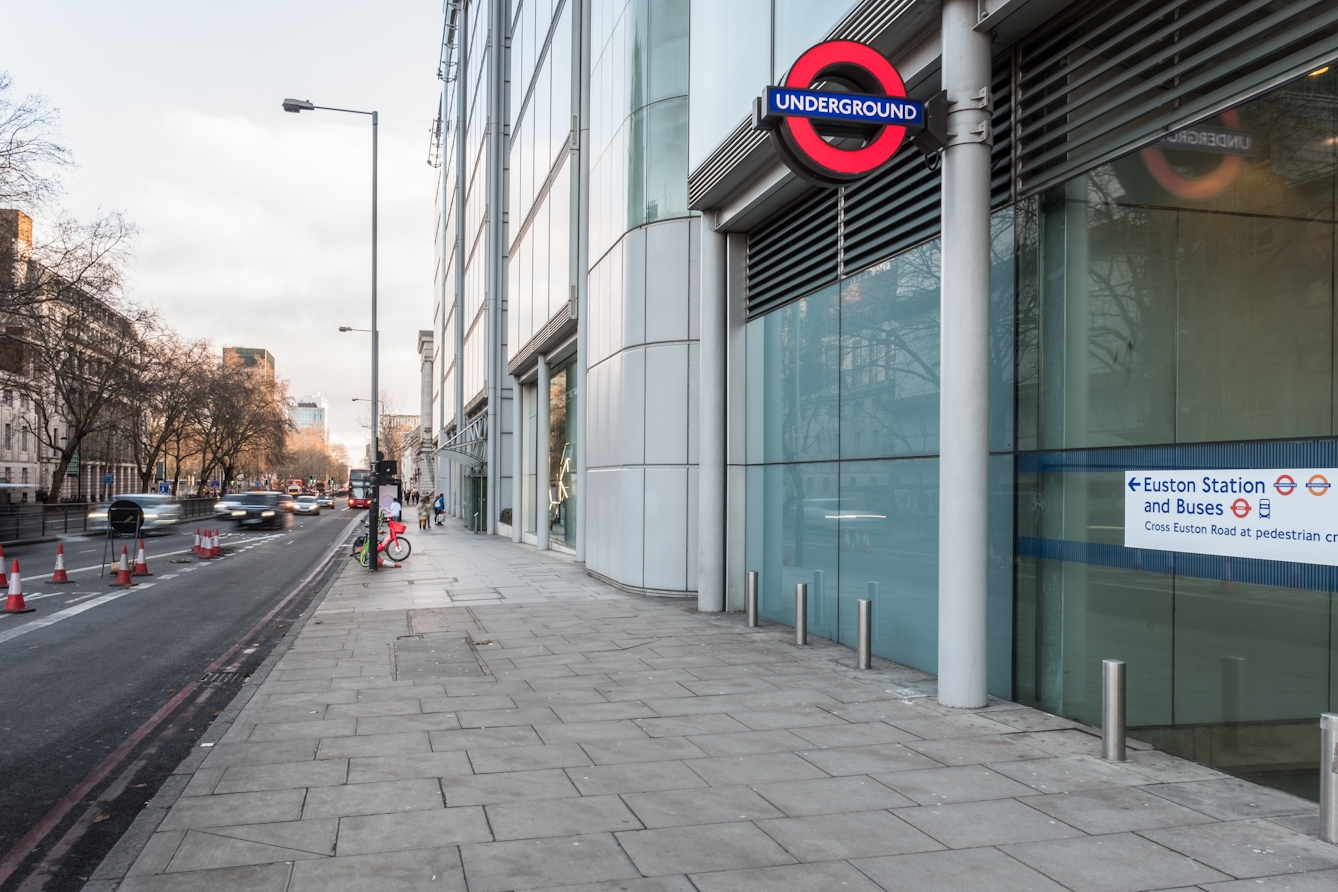
You can call us on +44 (0)20 7611 2222 or email us at access@wellcomecollection.org to arrange parking and collection, and to discuss your access needs. Find out more on our Accessibility page.
The building
Our building is a large building, with banners saying “Wellcome Collection” on it. The main entrance is in the middle, at the front of the building. It is free to enter, and all our galleries and exhibitions are free. Our exhibitions are open every day of the week except Mondays. You can find our complete opening hours on our Opening times page.
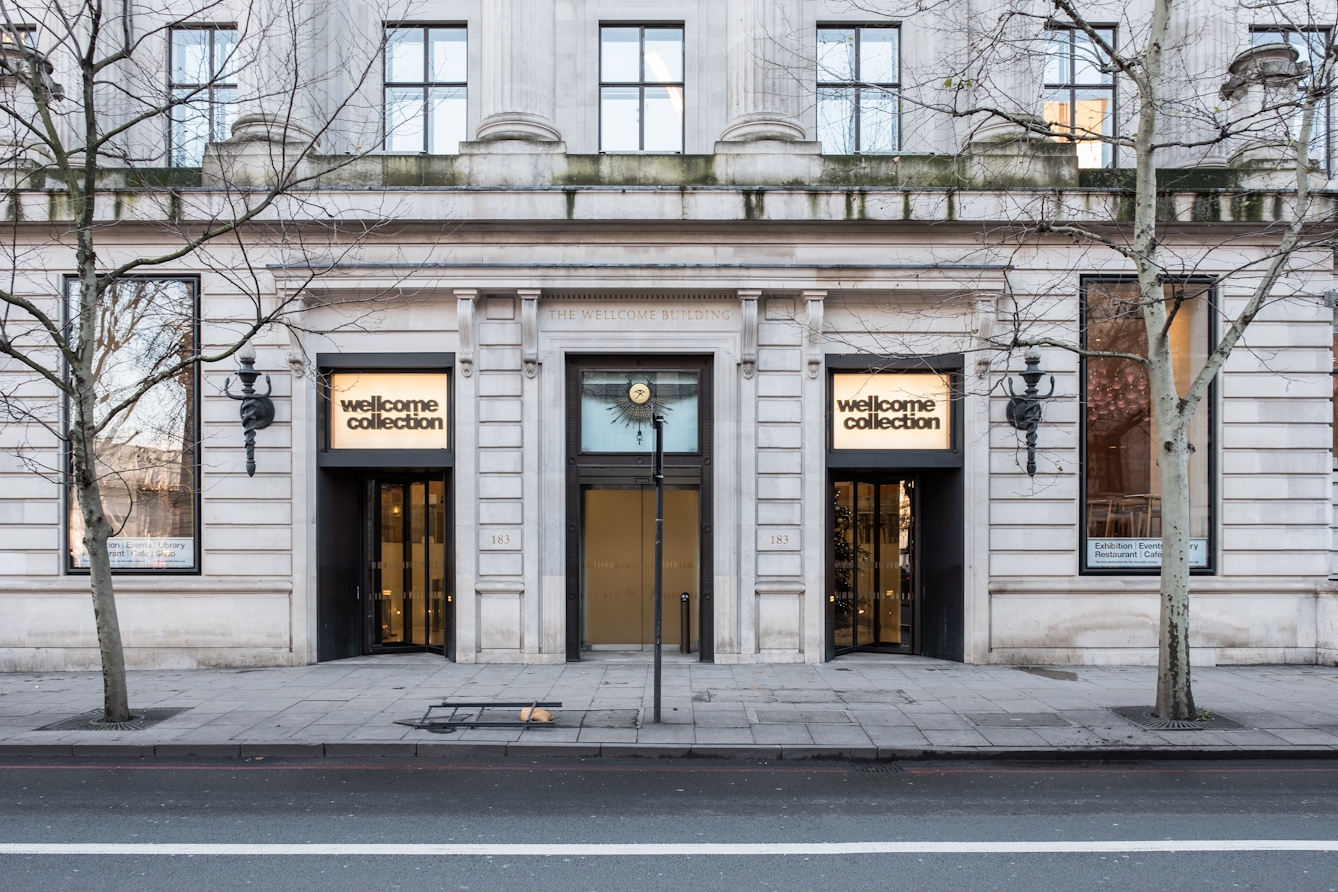
When you enter the building, there is a short flight of steps or a platform lift up to level 0, where there is a café and shop, and an Information Point. The entrance is bright and can sometimes be noisy and busy.
A member of our security team may ask to check your bag when you enter. A Visitor Experience assistant will then tell you how to find your way around the building.
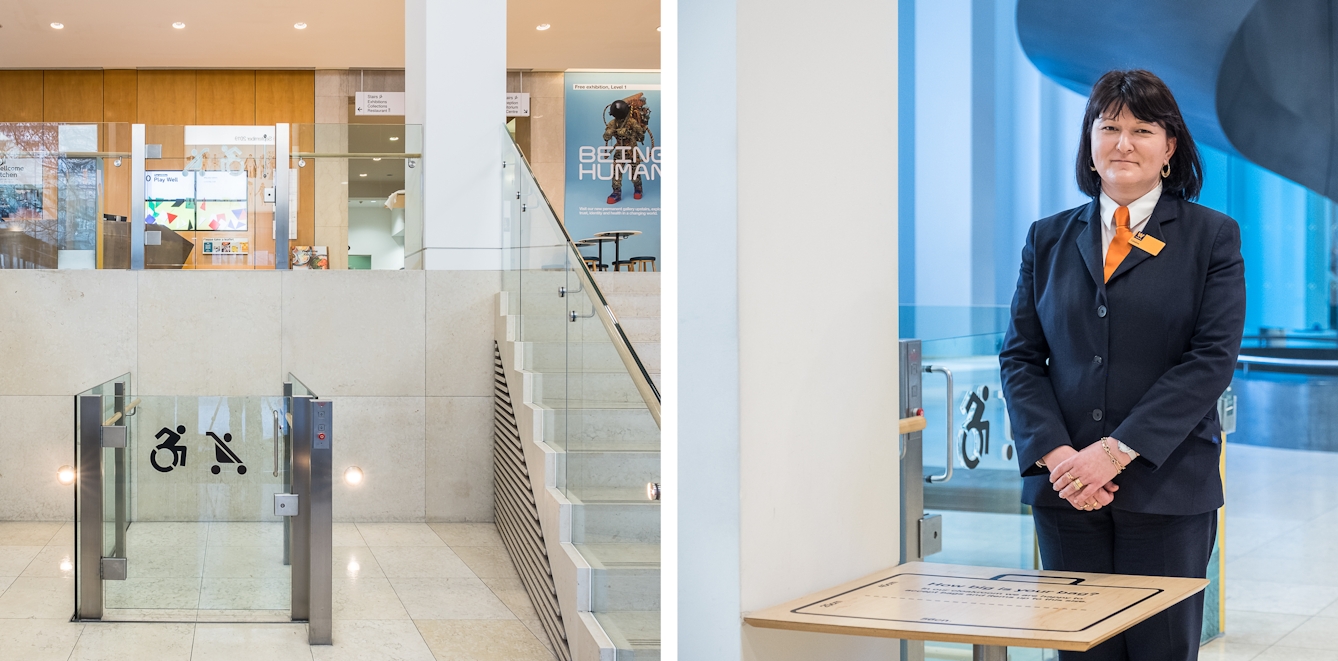
Members of our Visitor Experience Team will be at the Information Point and work throughout the building. They wear black tops with the words “Ask me” on them. You can ask them for directions or assistance at any time.
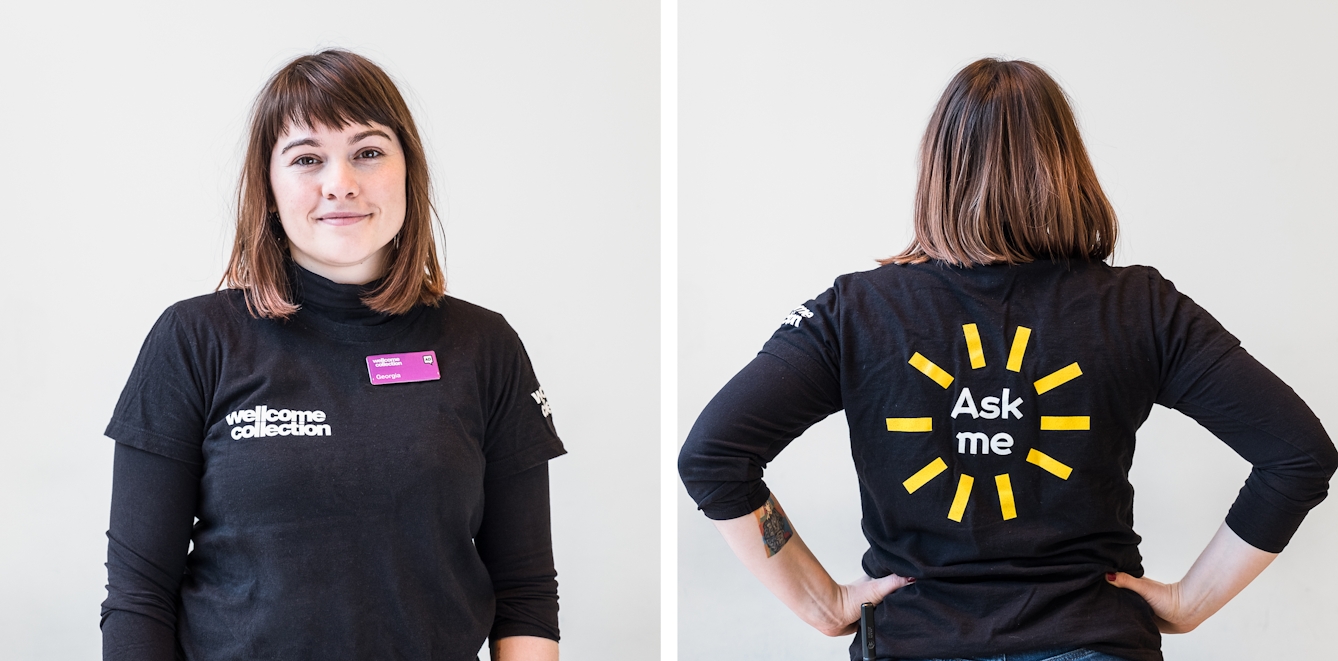
There is step-free and level access to all floors of our building via lifts. There is a platform lift at the entrance, which a member of our staff can help you use.
On level 0 there is one temporary exhibition space (which sometimes is closed between exhibitions). On level 1 there are two permanent galleries (which are open all the time) and another temporary exhibition gallery. The Reading Room is on level 2: this is usually a quiet space, but there are occasional events. Find out more about which exhibitions are open when you visit on our What’s on page.
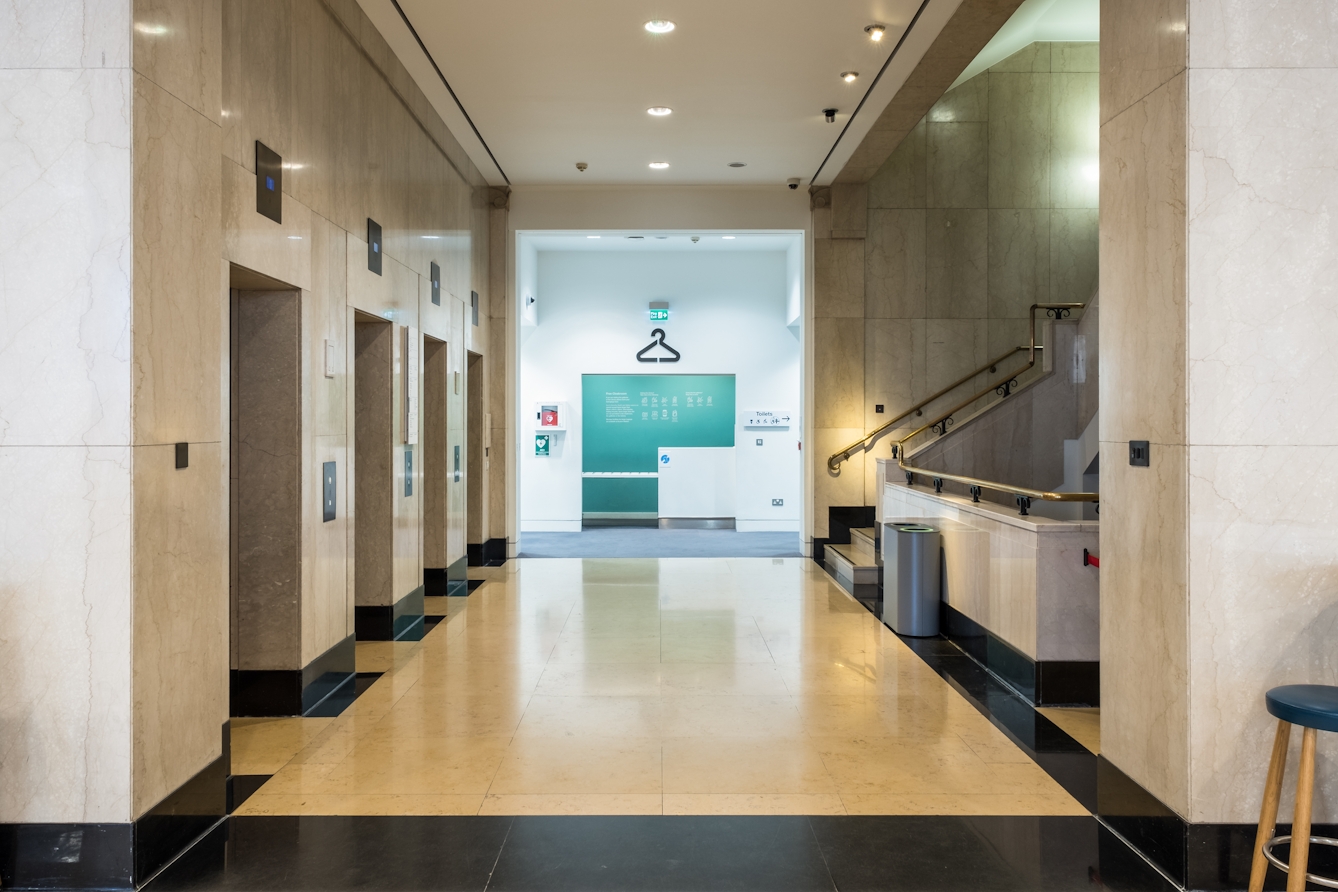
There are toilets on all floors, including accessible toilets and changing facilities. We have a Changing Places toilet on level 0. A radar key is needed to access the Changing Places toilet. If you do not have one, you can borrow one from the Information Point.
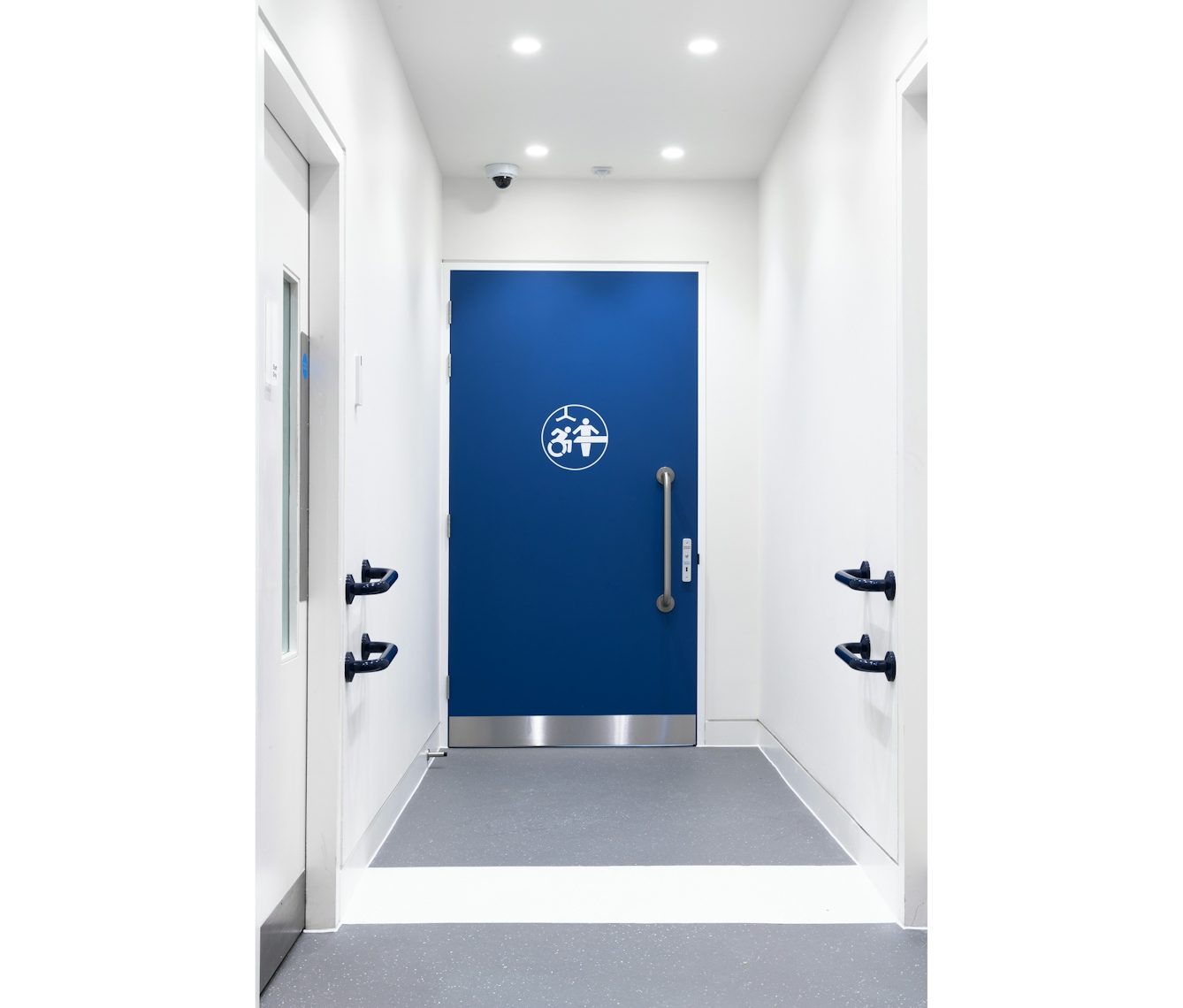
Straight ahead, past the stairs and the lift, there is a room with lockers of different sizes. There are instructions on the doors on how to use the lockers. Here you can leave any belongings, including bags up to the size of a cabin bag (56 x 45 x 25cm), which should not be taken into the galleries. There is a member of staff here to assist if needed.
There will be occasional announcements that can be heard throughout the building. These can be quite loud. They are usually to let you know about tours of the galleries or other special events, which you can attend if you wish. If there is a fire alarm and you have to leave the building, this will be clearly stated, and members of our Visitor Experience Team will help you.
Some resources and objects in our galleries are meant to be touched and handled, but because of our Covid-19 restrictions we are not letting visitors use these at the moment. If there is something in the gallery that you are not supposed to touch you will see a sign in yellow and green saying ‘Please do not touch’ next to it.
We understand that it might feel unclear what you can and cannot touch. So, if you are not sure, please ask a member of staff in the gallery.
Being Human
Being Human is a permanent gallery on level 1. There are several entrances; you can get to it by the central staircase or lifts and come back down again by the spiral staircase. The one-way system we have in place at the moment will direct you to the central staircase and the lifts.
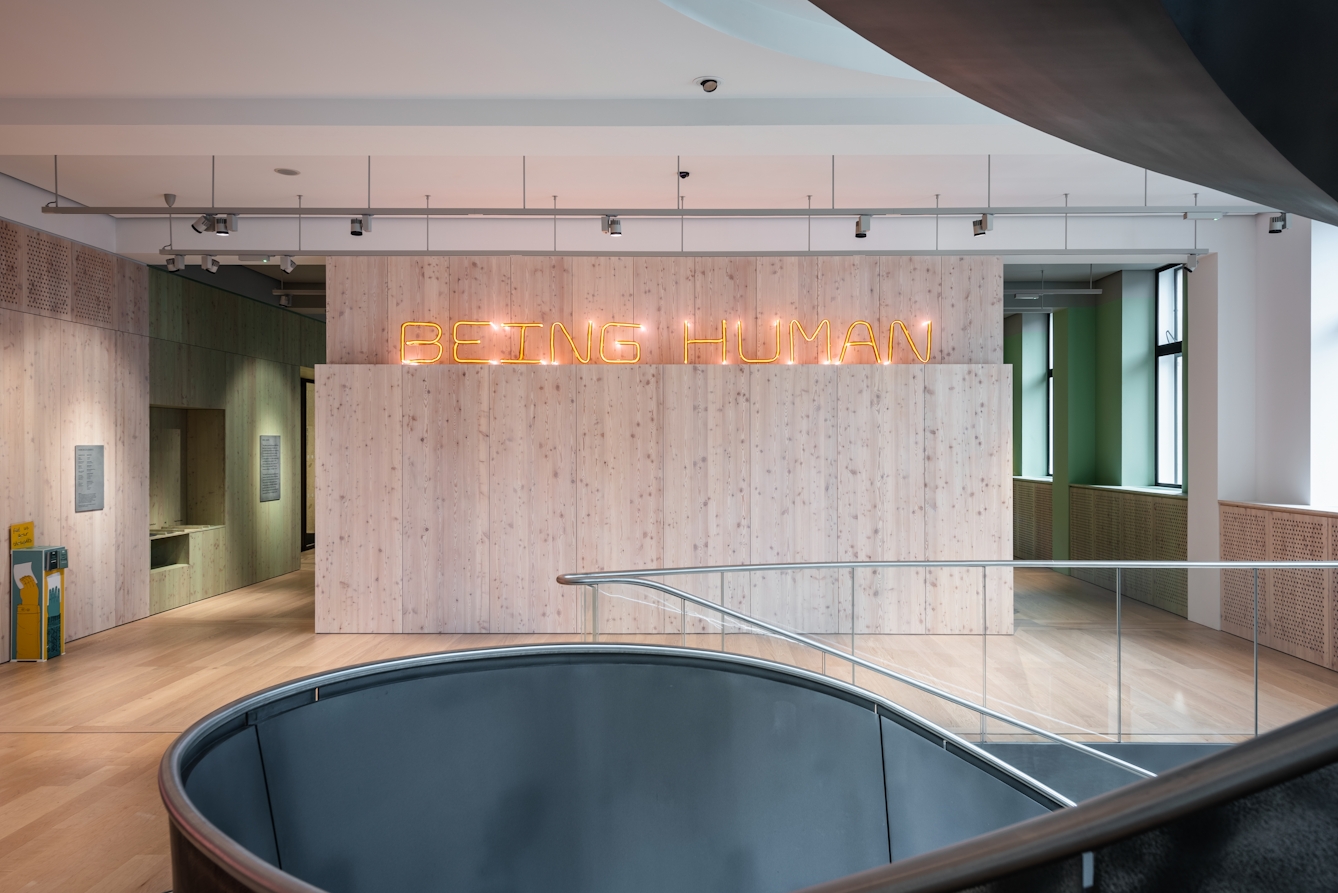
Being Human is about what it means to be human today. There are four sections: Genetics, Minds & Bodies, Infection, and Environmental Breakdown. The gallery contains about 50 artworks and scientific objects that raise questions about our health, our identity and who we trust in a changing world.
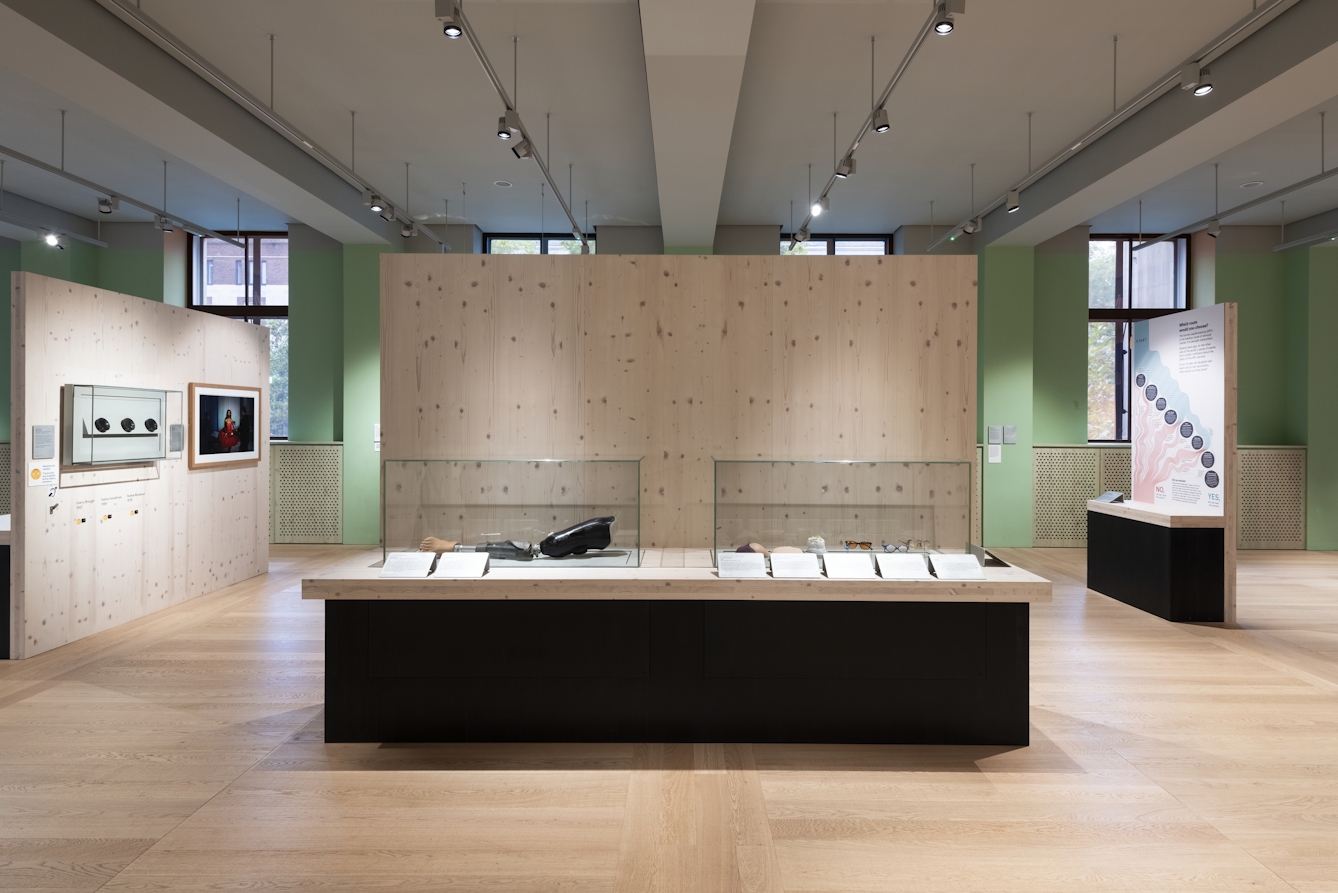
Most people will spend 30 to 45 minutes in the gallery, but you can spend as much or as little time here as you like. There are four sections, but you can see right across the gallery, and pick out the things that interest you. There is no set order in which you have to look at things.
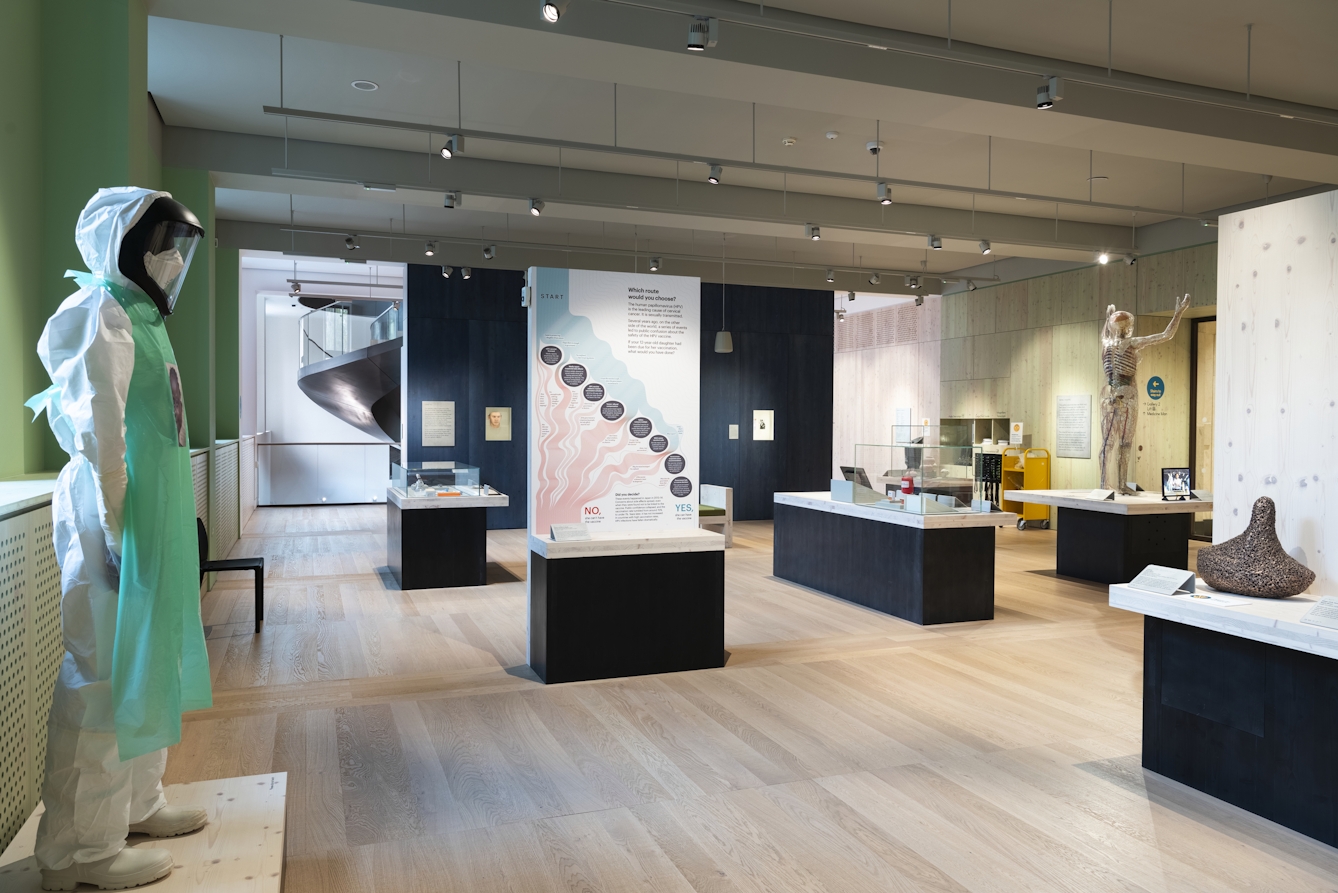
The gallery is a single room. It’s not too dark, and there are windows through which you can see the road and trees outside. There are lots of places to sit down, and plenty of space for groups and wheelchair users to move around and between the exhibits.
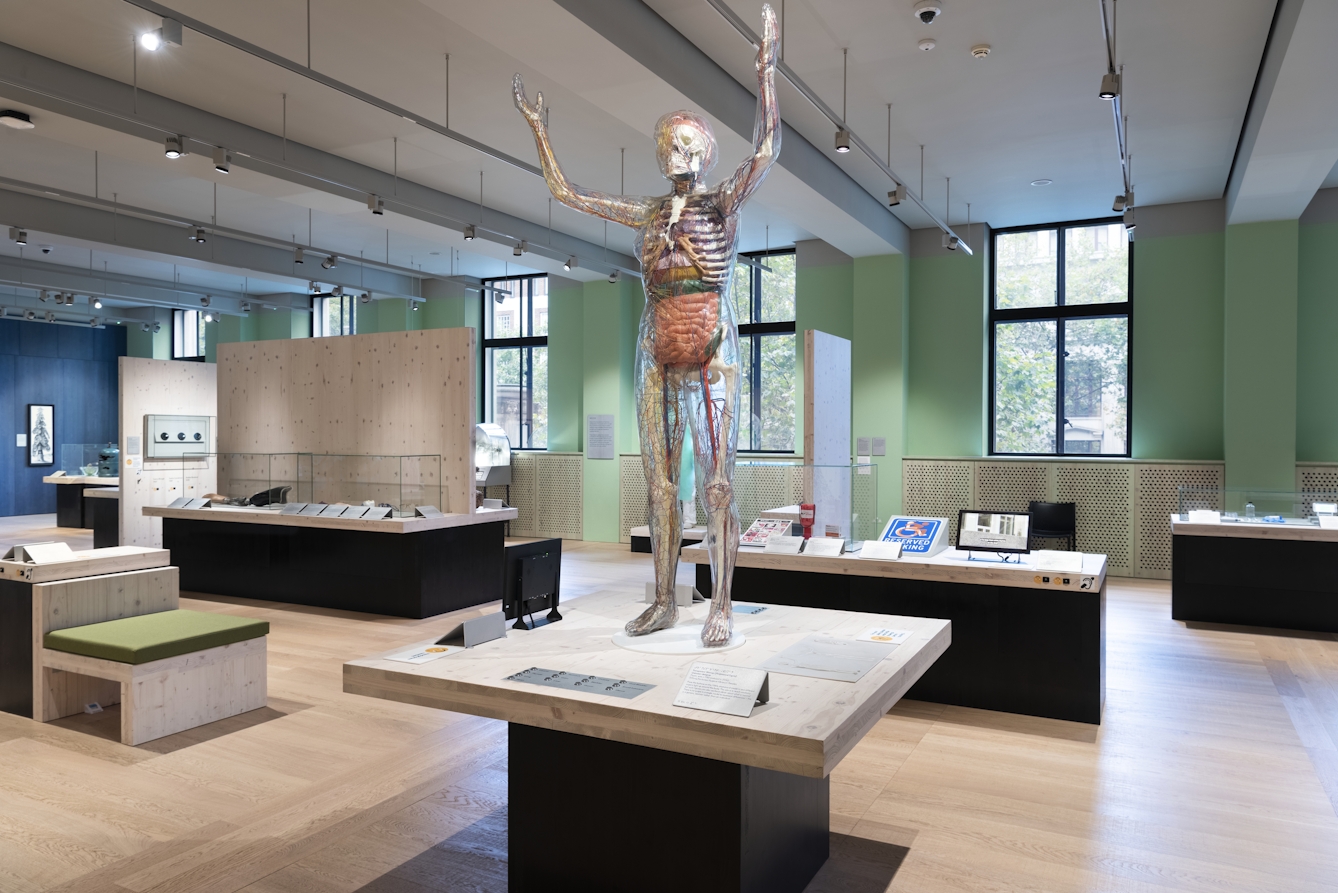
Every object has a caption describing it. The title of each object is also available in Braille. Each caption also has a number, which you can use to access BSL captions and audio descriptions for the object.
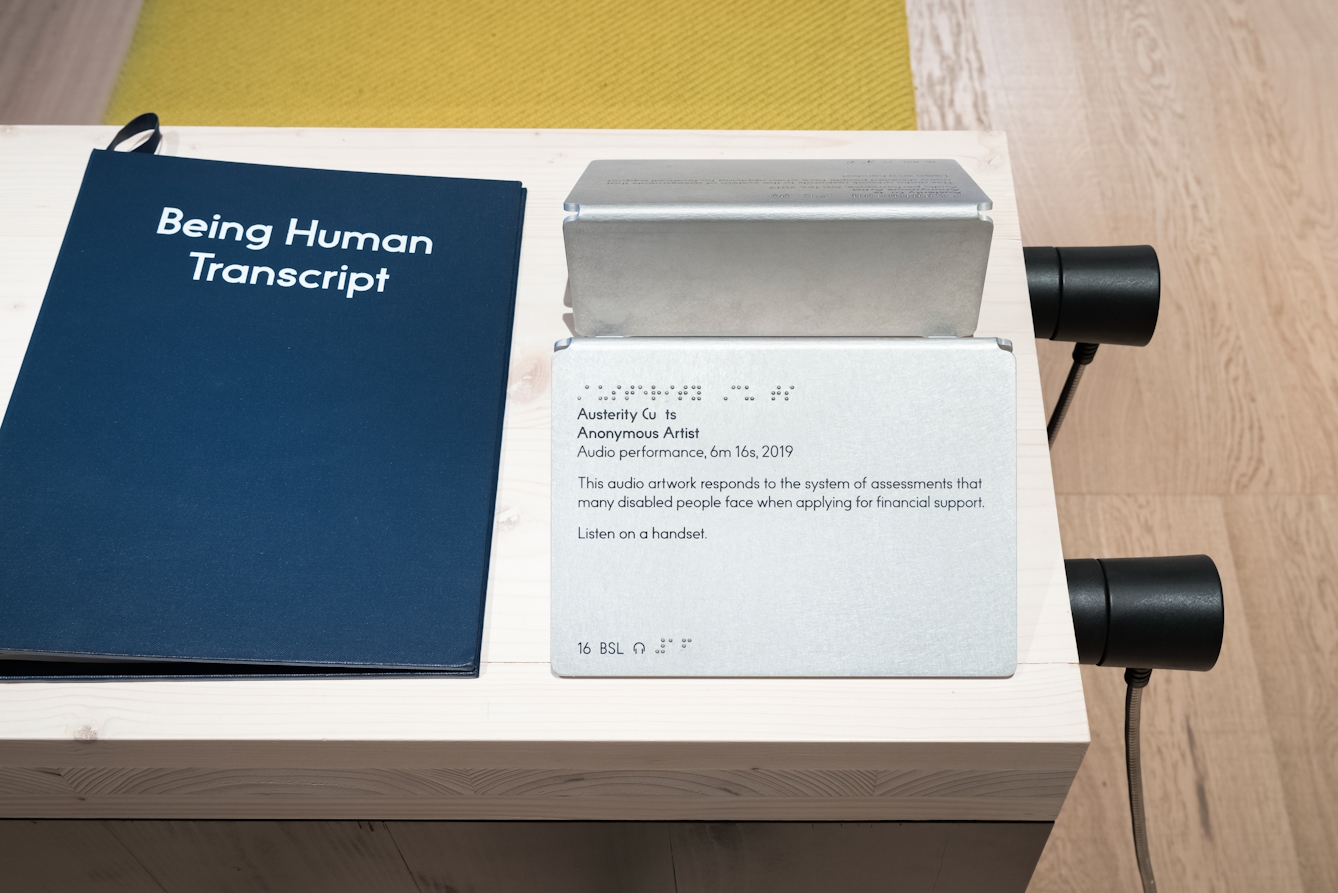
There is a shelf with extra resources to improve the accessibility of the gallery. These usually include large-print guides, a tactile plan of the gallery, a tactile book, handheld players with BSL captions, and devices with audio descriptions.
The tactile plan and book are not available at the moment because of Covid-19 safety measures.
The other resources are still free to pick up and use, if you want to. We provide wipes to disinfect the resources before and after you use them. The resources all use object numbers and titles to help you find the relevant information.
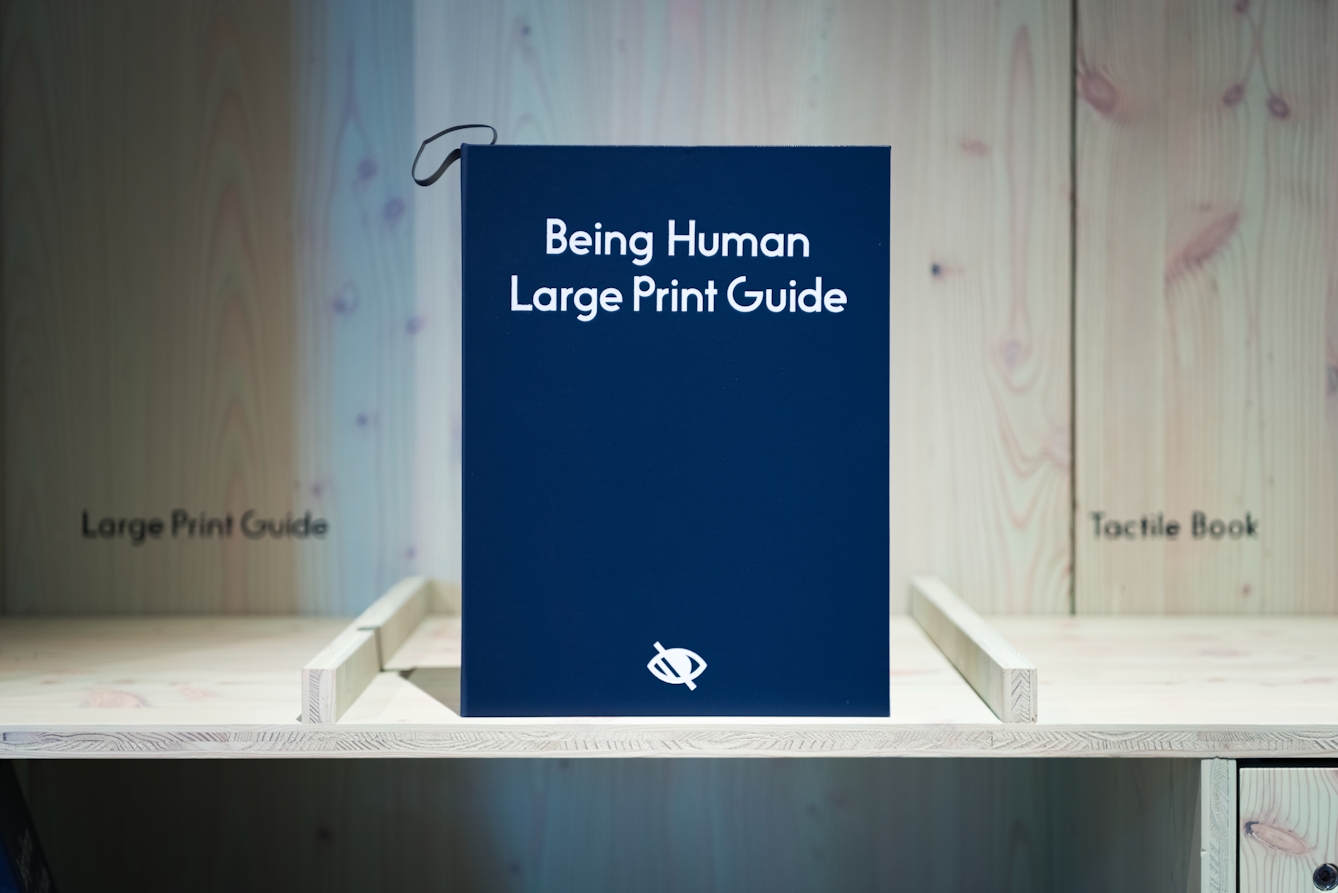
You can touch some of the exhibition objects that are not in glass cases. The objects you are not allowed to touch are clearly labelled “Please do not touch”. Some objects have touch tiles next to the captions, which allow you feel what the texture or shape of the object is like without touching the object itself.
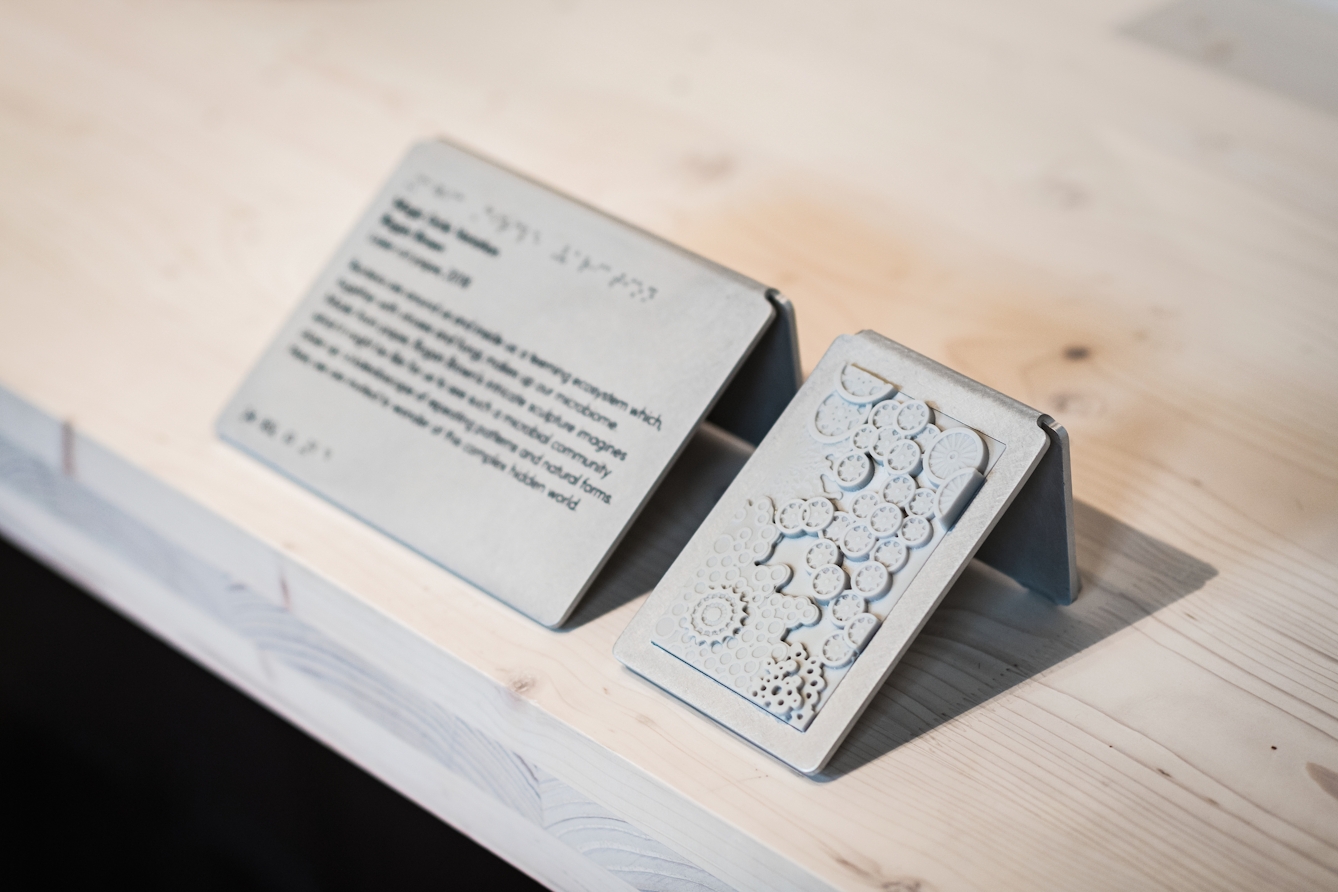
There are also some objects you can handle. You can select music on a jukebox and press buttons to light up organs on an anatomical model.
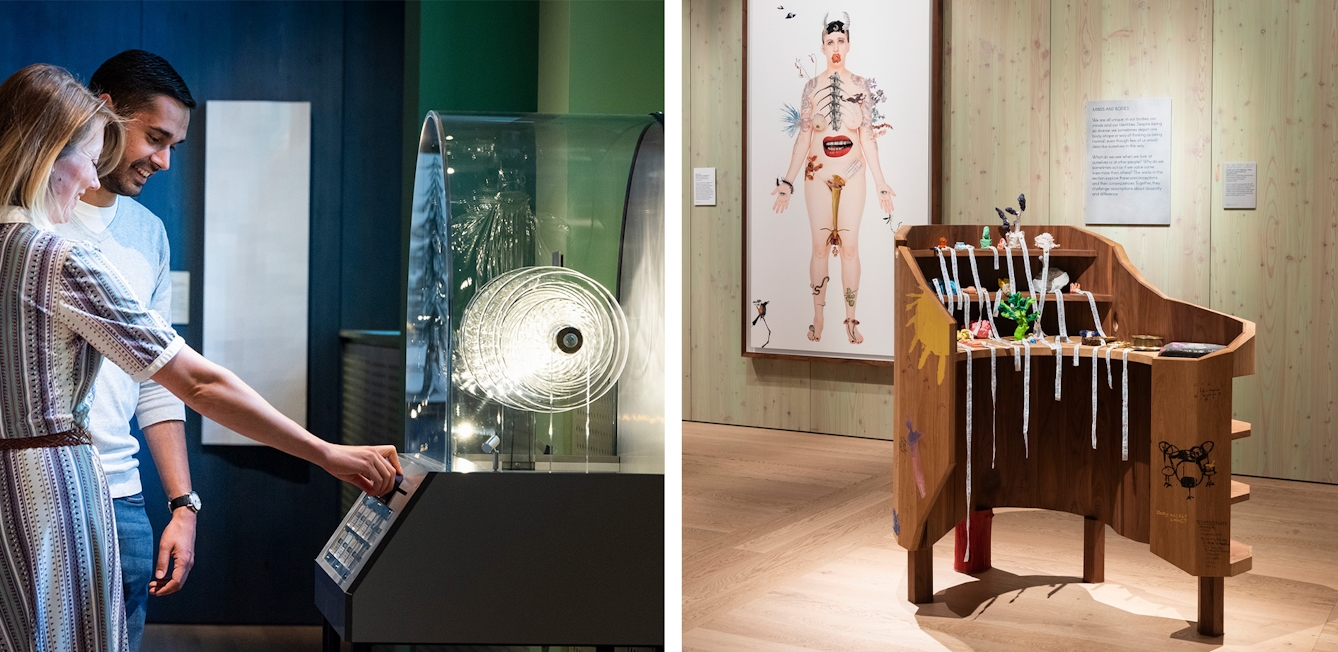
One object has a specific smell: ‘5138008’ smells of breast milk (but doesn’t contain any actual milk). The smell is only present when you are very close to the object.
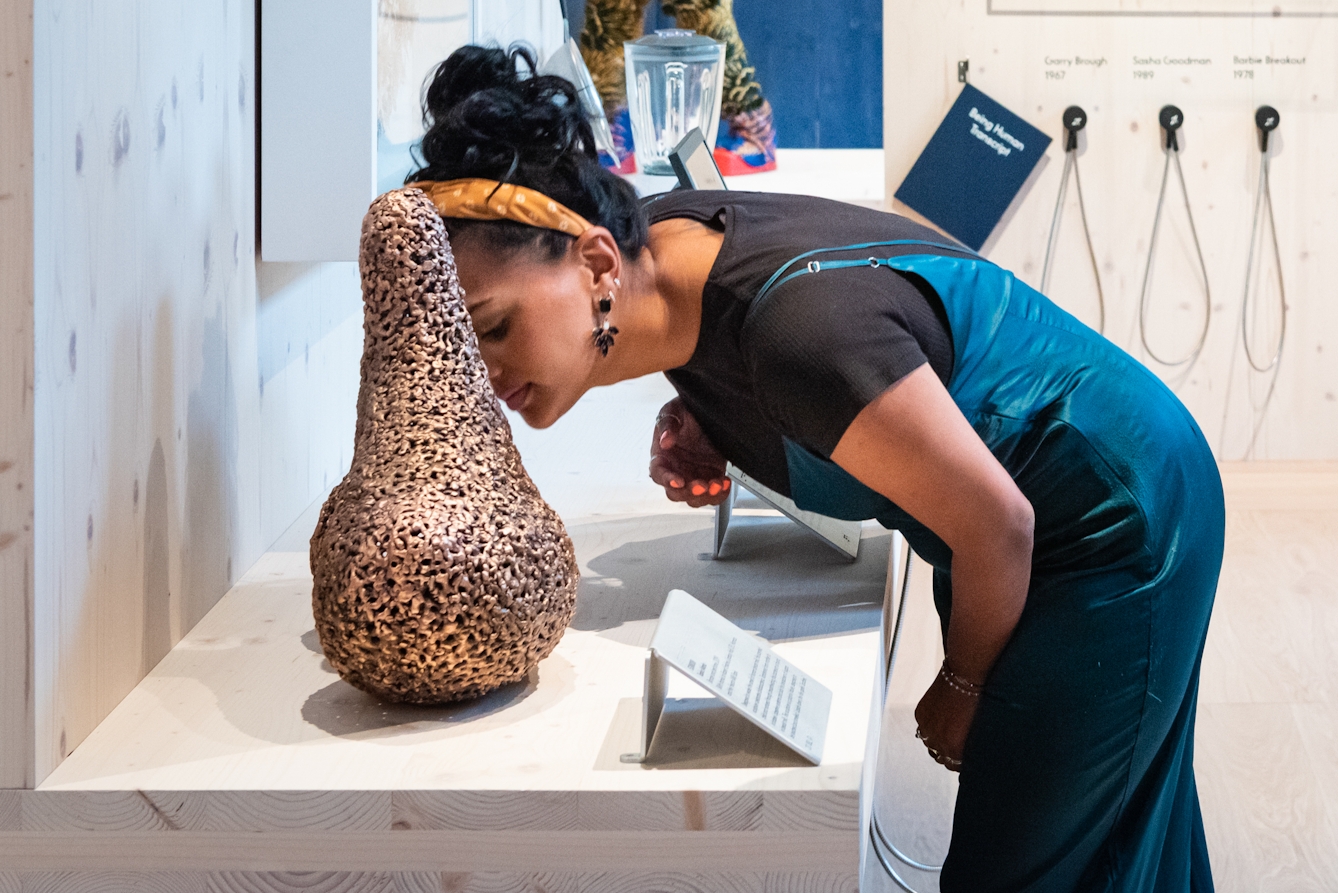
There is a section about infection, which is quite self-contained and easily avoided. In this section there are some objects made of HIV-infected human blood in one of the display cases. These have been through a process that has rendered them inert: they are completely safe. There is also a display about do-it-yourself faecal transplants, but the kit on display has not been in contact with any human waste!
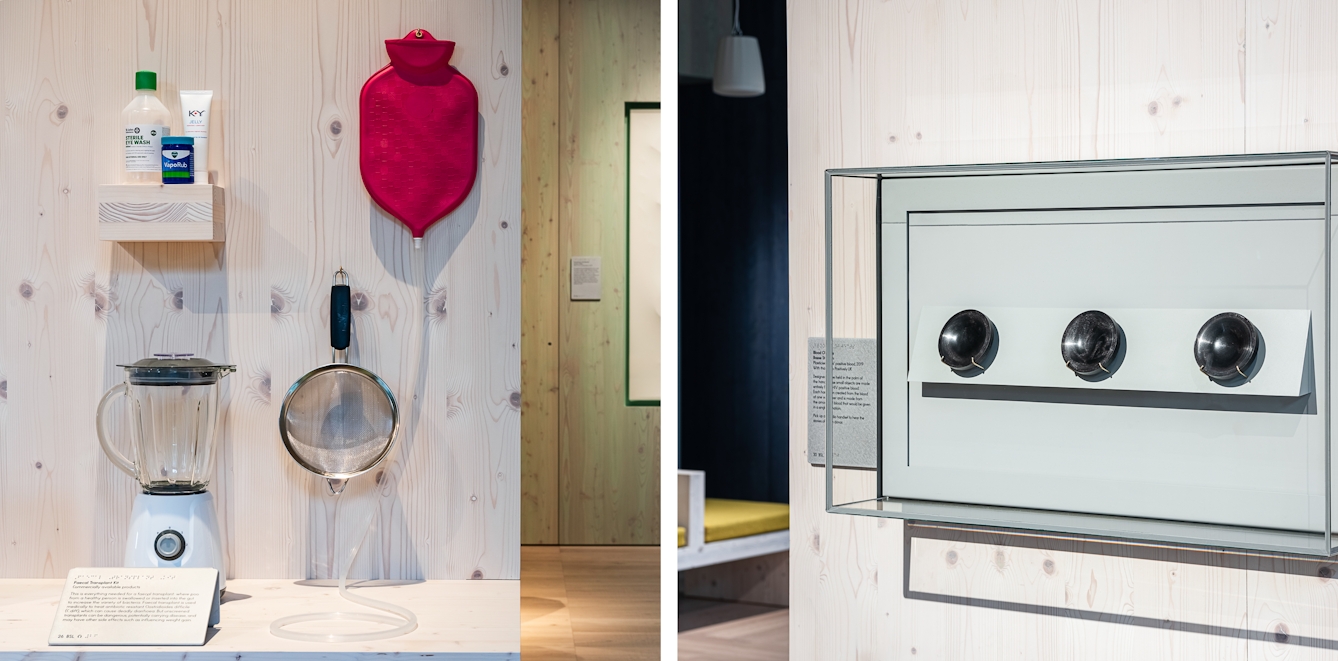
Some exhibits have sound. In most cases you can listen by plugging in your own headphones into the jack next to the object caption. Three objects play the sound out loud in the gallery, but it’s limited to a small area. You can tell where this area is by the speakers hanging from the ceiling overhead.
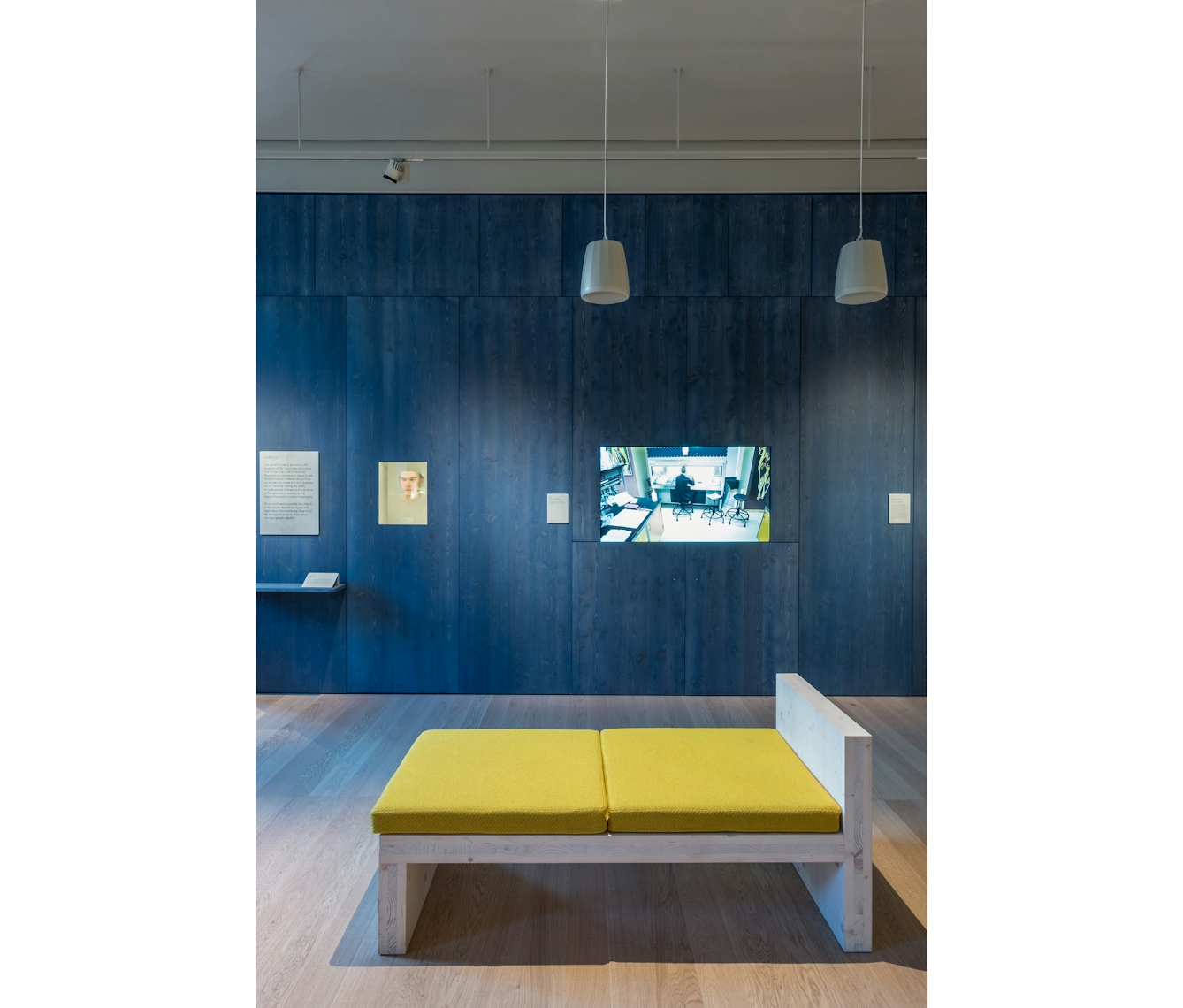
Many objects in the gallery represent a variety of different human bodies and faces. Some include nudity and references to sex. There is a transparent anatomical model made entirely of plastic and wires. There is a mannequin dressed in personal protective equipment, including a helmet. There is a plastic mask of an imagined human face, which you might find slightly uncanny.
Other things that you might like or find interesting in the gallery include a gene-editing kit, an intricate paper sculpture of the bacteria in your gut, an interactive jukebox that plays songs about infectious diseases, and a sculpture of a refugee astronaut.
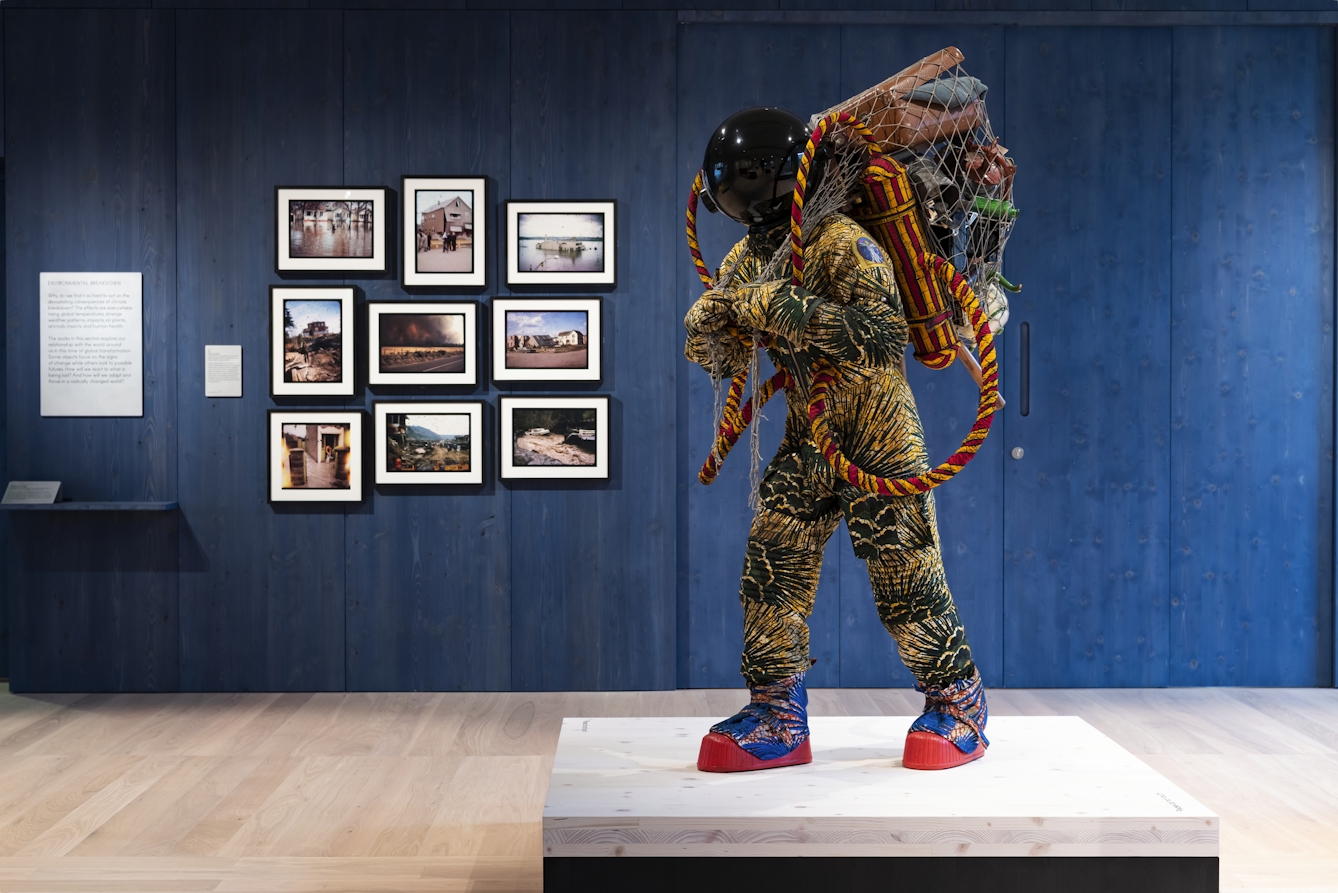
Things in the gallery that you might find relaxing include a film of a McDonald’s restaurant slowly filling with water and an installation that appears at first to be a blank panel but will eventually tell you that “EVERYTHING IS OKAY”.
